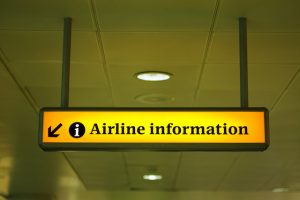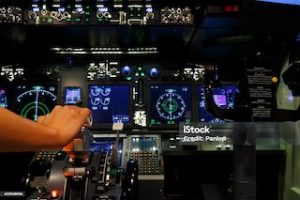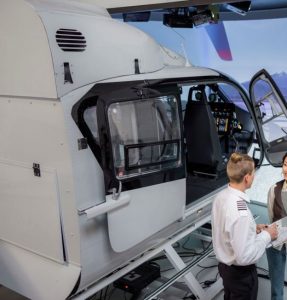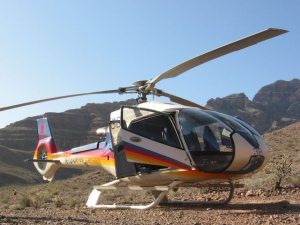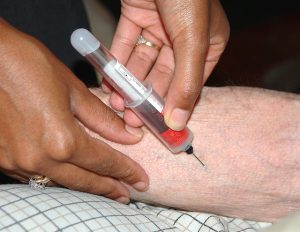LinkedIn Job Search Of An Airline Pilot
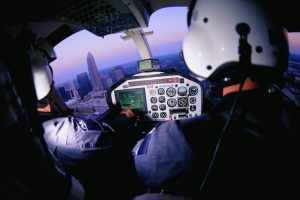 Becoming an airline pilot takes planning, patience, and connections. Online tools make the journey smoother. I used LinkedIn job search to move forward. Each step added value to my job hunt. With the right moves, I found real airline pilot jobs using LinkedIn’s search and features.
Becoming an airline pilot takes planning, patience, and connections. Online tools make the journey smoother. I used LinkedIn job search to move forward. Each step added value to my job hunt. With the right moves, I found real airline pilot jobs using LinkedIn’s search and features.
Creating a strong LinkedIn job search profile
First, I built my LinkedIn job search profile with care. I added a professional photo and included every flight qualification. My bio had clear, direct information. I added my hours, license type, and simulator training. Each section gave recruiters a complete view of my training journey and career goals.
Choosing the right headline
My headline described who I was and what I wanted. I used words like “Commercial Pilot” and “Multi-Engine Rated.” Recruiters found my profile faster through keyword searches. A clear headline also gave confidence to those visiting my page. It helped attract the right type of attention.
Updating my experience section
In my experience section, I listed training hours, aircraft flown, and instructor feedback. I kept the tone active and confident. Recruiters want to see a clear path. So I showed steady growth in training and responsibilities. I used short, clear sentences for each detail.
Highlighting aviation certifications
Certifications make a difference. I listed all my licenses in the certification section. I added my commercial pilot license, multi-engine rating, and instrument training. I included issue dates and linked to aviation bodies. That helped recruiters verify my qualifications without extra work.
Using keywords for aviation
I placed keywords across my profile. I used words like airline pilot, flight crew, aviation safety, and jet transition. These matched what recruiters searched for. I checked other pilot profiles to improve my keyword choices. That raised my profile rank in LinkedIn job search.
Building a pilot network
Networking helped my job search grow faster. I connected with other pilots, flight instructors, and recruiters. I wrote polite connection notes with each request. Over time, my network expanded to airlines and aviation schools. New job posts appeared as my connections grew.
Following airlines and recruiters
I followed airlines, recruitment pages, and aviation schools. Many posted jobs, news, and hiring events. By liking posts, I stayed visible to hiring teams. This simple move gave me daily updates on job openings. I never missed a chance to apply.
Using the LinkedIn job search tool
LinkedIn job search gave me new pilot openings each day. I searched using terms like airline pilot, first officer, and cadet program. I added locations based on where I could work. I saved searches and turned on alerts for daily updates.
Setting job alerts for speed
Speed matters in job searches. I set alerts to notify me of new pilot openings. Notifications came to my email and phone. I acted fast and applied early. Recruiters noticed that I responded quickly, which helped me get interviews faster.
Reading job posts carefully
Each job post had clues. I read the license type, hours required, and fleet details. Some wanted cadet-level experience, others needed over 500 flight hours. I applied to those that matched my status. That saved time and improved my chances.
Using the easy apply button
LinkedIn’s Easy Apply made things faster. I kept my resume updated and ready. With one click, I sent my application. I also added a short message to each one. That message gave a personal touch and improved response rates.
Writing clear and short messages
When messaging recruiters, I used short, polite notes. I shared my license status, training school, and job interest. I ended each message with thanks. These notes got replies more often than long emails. Direct messages made a big difference in follow-up steps.
Joining aviation groups on LinkedIn
LinkedIn groups helped me meet more people in aviation. I joined pilot networks and airline training forums. Group posts had job leads, career tips, and hiring trends. I stayed active by commenting and liking posts. That helped others find me too.
Sharing aviation content
Posting content built my presence. I shared flight photos, training updates, and aviation news. I wrote simple captions with each post. Others in my network liked and commented often. That increased my profile views and made recruiters more aware of me.
Asking for endorsements
Endorsements helped build trust. I asked instructors and classmates to endorse skills like Flight Operations and Aeronautical Decision Making. They responded quickly. Each endorsement added weight to my profile. It also showed I had support from people in the same field.
Requesting written recommendations
I also asked for written feedback. I sent polite messages to former flight instructors and colleagues. Their words showed recruiters I worked hard and stayed focused. These notes stayed on my profile and helped during interviews.
Checking company pages for hiring posts
Company pages often shared job updates. I visited airline pages often. Some had Hiring Now banners or event notices. I clicked Follow to stay updated. Their job boards linked back to their websites. I tracked each new post and applied quickly.
Looking at job post dates
I focused on new listings. Job posts older than two weeks got fewer replies. I checked posting dates each day. That helped me apply early and stay ahead of others. Applying early improved my chances of getting seen first.
Reading recruiter profiles
Some recruiters shared job posts on their personal pages. I followed and connected with them. Their posts often had pilot hiring programs and walk-in events. I liked and shared their updates. That helped build relationships and kept me visible.
Keeping resume simple and focused
My resume stayed clean and clear. I used simple headings, listed hours, and focused on achievements. I matched my resume with my LinkedIn profile. This gave a clear and steady message. I updated both each month.
Tracking my applications
I made a list of every airline I applied to. I recorded dates, job titles, and contact people. This helped me follow up. It also showed how much progress I made. Keeping track kept my search organised and less stressful.
Following up after applications
After applying, I waited a few days. Then I sent a message to the recruiter. I thanked them and asked about next steps. This kept me fresh in their minds. Many replied and gave updates on my status.
Staying active on the platform
Activity mattered. I logged in each day to check messages, like posts, and read updates. I stayed visible. That helped LinkedIn keep me in search results. Being present brought more job leads.
Using LinkedIn learning
LinkedIn Learning had aviation and career skills courses. I took short courses on interviews, communication, and flight safety. I added them to my profile. These small moves showed that I kept learning and growing. Recruiters liked that attitude.
Getting help from aviation mentors
Some senior pilots offered support on LinkedIn. I followed them and replied to their posts. Some gave advice through comments or messages. They shared links, hiring tips, and common mistakes to avoid. Their insights made my job search easier.
Staying away from spammy activity
I avoided fake job offers and copied posts. I did not send spam messages or post false claims. Keeping my page honest helped build trust. Recruiters look for real stories and steady effort. I kept everything clean and true.
Using location filters in job search
Location mattered in job searches. I added filters like Sydney, Brisbane, and Melbourne. Some airlines preferred local candidates. I also searched by country. This showed jobs from nearby regions. I saved each filter for future use.
Improving interview readiness
As I got replies, I practiced interviews. I used LinkedIn posts and blogs to learn common questions. I read pilot hiring tips from other users. I stayed calm and prepared. Confidence grew with each attempt.
Keeping license records handy
Some job posts asked for license numbers or scans. I kept digital copies ready in my cloud drive. That saved time during urgent applications. Being ready helped me apply faster and show I was serious.
Watching for pilot recruitment drives
Airlines often hosted hiring events. LinkedIn job search showed me where and when. I saved those posts and added them to my calendar. Some events had early registration. I applied and prepared for those sessions in advance.
Adapting my approach each month
Every month brought new trends. I changed keywords, checked new airlines, and updated my skills. Small updates made a big difference. I kept improving my chances with each step. Staying flexible helped me grow faster.
Celebrating each step forward
Each new connection and message brought hope. Even small replies mattered. I stayed thankful for progress. The job search takes time, but energy builds with action. LinkedIn made each day productive.
From profile to pilot seat
LinkedIn job search helped shape my aviation path. With steady effort, I found real openings and real people. Every step brought new lessons. From my profile to my inbox, I saw results. The journey continues, but the wings are ready.




